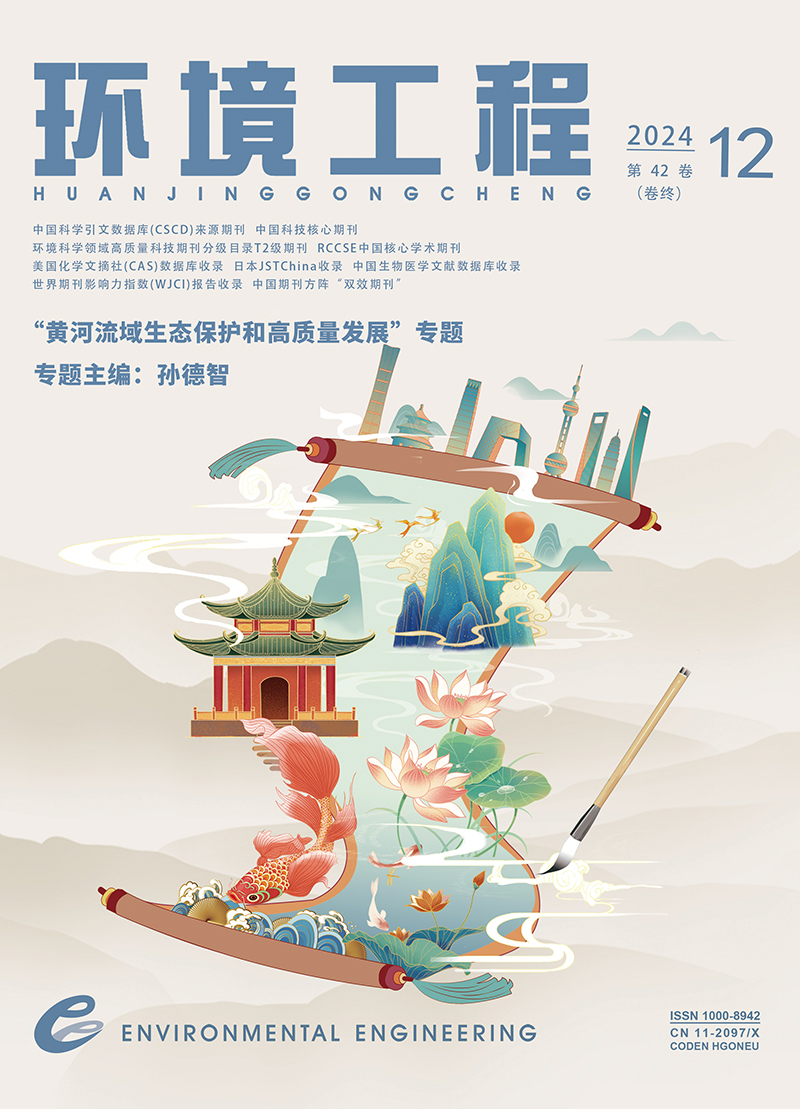| [1] |
MUELLER A, ULRICH N, HOLLMANN J, et al. Characterization of a multianalyte GC-MS/MS procedure for detecting and quantifying polycyclic aromatic hydrocarbons (PAHs) and PAH derivatives from air particulate matter for an improved risk assessment[J]. Environmental Pollution, 2019,255(Part 2):112967.
|
| [2] |
王玮,陈宗良.大气气溶胶中无机碳和有机碳[J].环境科学丛刊,1991,12(2): 27-34.
|
| [3] |
RAJAGOPALAN S, AL-KINDI S G, BROOK R D. Air pollution and cardiovascular disease: JACC state-of-the-art review[J]. Journal of the American College of Cardiology, 2018,72(17): 2054-2070.
|
| [4] |
LIU F, TAN Q W, JIANG X X, et al. Effects of relative humidity and PM2.5 chemical compositions on visibility impairment in Chengdu, China[J]. Journal of Environmental Sciences,2019, 86(12):15-23.
|
| [5] |
KONG L B, XIN J Y, LIU Z R, et al. The PM2.5 threshold for aerosol extinction in the Beijing megacity[J]. Atmospheric Environment,2017,167:458-465.
|
| [6] |
古金霞,陈泽鑫,李琳希,等.京津冀区域颗粒物污染特征研究[J].南开大学学报(自然科学版),2020,53(5):26-32.
|
| [7] |
于广河,苏翠平,曹礼明,等.珠三角典型轻工业区大气PM2.5中有机物来源解析[J].环境科学与技术,2020,43(9):155-162.
|
| [8] |
康盼茹,陶园园,童艳君,等.2020—2021年冬季长三角北部典型农业城市大气PM2.5及其组分特征和来源解析[J].环境科学研究,2023,36(12):2269-2281.
|
| [9] |
张俊峰,韩力慧,程水源,等.京津冀地区典型城市大气细颗粒物碳质组分污染特征及来源[J].环境科学研究,2020,33(8):1729-1739.
|
| [10] |
ZOU B, HUANG X, ZHANG B, et al. Source apportionment of PM2.5 pollution in an industrial city in southern China[J].Atmospheric Pollution Research, 2017:1193-1202.
|
| [11] |
苗青青,姜楠,张瑞芹,等.中原城市群典型城市秋冬季大气PM2.5污染特征及溯源[J].环境科学,2021,42(1):19-29.
|
| [12] |
马英歌,杨露,狄睿苗,等.周口市2022年冬季重污染过程中细颗粒物污染特征及成因分析[J].环境科学,2023,44(11):5986-5996.
|
| [13] |
河南省生态环境厅.2021.河南省环境状况公报[EB/OL]. http://www.sthjthenangovcn/hjzl/hjzkgbggnb. 2021-11-19.
|
| [14] |
田莎莎,张显,卞思思,等.沈阳市PM2.5污染组分特征及其来源解析[J].中国环境科学, 2019, 39(2):487-496.
|
| [15] |
王念飞,陈阳,郝庆菊,等.苏州市PM2.5中水溶性离子的季节变化及来源分析[J].环境科学, 2016,37(12):4482-4489.
|
| [16] |
王士宝,姬亚芹,李树立,等.天津市春季道路降尘PM2.5和PM10中的元素特征[J].环境科学, 2018,39(3):990-996.
|
| [17] |
TIAN M, WANG H B, CHEN Y,et al. Characteristics of aerosol pollution during heavy haze events in Suzhou, China[J].Copernicus GmbH, 2016, 16(11):7357-7371.
|
| [18] |
杨留明,王申博,郝祺,等.郑州市PM2.5中水溶性离子特征及来源分析[J].环境科学, 2019,40(7):2977-2984.
|
| [19] |
张棕巍,胡恭任,于瑞莲,等.厦门市大气PM2.5中水溶性离子污染特征及来源解析[J].中国环境科学, 2016,36(7):1947-1954.
|
| [20] |
王熙,张亚飞,姬亚芹,等.天津港地区PM2.5传输路径及潜在源分析[J].环境工程,2023,41(增刊2):274-278.
|
| [21] |
SEIBERT P, KROMP-KOLB H, BALTENSPERGER U, et al. Trajectory analysis of high-alpine air pollution data[J]. Air Pollution Modeling and its Application, 1994,18:595-596.
|
| [22] |
邱坚,霍玉玲,万学平,等.镇江市四季PM2.5污染特征与潜在源区分析[J].环境工程,2019,37(6):123-130.
|
| [23] |
PATERO P.Least squares formulation of robust non-negative factor analysis[J]. Chemometics and Intelligent Laboratory Systems,1997,37(1)23-35.
|
| [24] |
彭超,李振亮,曹云擎,等.基于受体和化学传输的综合模型解析重庆PM2.5来源[J].环境科学,2022,43(6):2867-2877.
|
| [25] |
苏维峰,孔少飞,郑煌,等.武汉市夏季大气挥发性有机物实时组成及来源[J].环境科学,2022,43(6):2966-2978.
|
| [26] |
丁铖,于兴娜,侯思宇.西安市大气降水污染和沉降特征及其来源解析[J].环境科学, 2020,41(2):647-655.
|
| [27] |
吴琳,沈建东,冯银厂,等.杭州市灰霾与非灰霾日不同粒径大气颗粒物来源解析[J].环境科学研究, 2014,27(4):373-381.
|
| [28] |
赵清,李杏茹,王国选,等.运城秋冬季大气细粒子化学组成特征及来源解析[J].环境科学, 2021,42(4):1626-1635.
|
| [29] |
彭小乐,郝庆菊,温天雪,等.重庆市北碚城区气溶胶中有机碳和元素碳的污染特征[J].环境科学, 2018,39(8):3502-3510.
|
| [30] |
蒋慧敏,李忠勤,张昕,等.兰州市冬夏季大气PM2.5化学组分特征及来源分析[J].环境科学学报, 2021, 41(5):1690-1702.
|
| [31] |
索娜卓嘎,谭丽,周芮平,等.采暖期北京大气PM2.5中碳组分的分布特征及来源解析[J].中国环境监测, 2018.34(4):54-59.
|
| [32] |
杨铁金,于海洋,何友江,等.2017—2018年秋冬季唐山市PM2.5中元素组成特征及来源解析[J].环境科学研究,2020,33(9):2030-2039.
|
| [33] |
谷超,徐涛,马超等.伊犁河谷核心区春季PM2.5组分特征及来源解析[J].环境科学,2023,44(4):1899-1910.
|
| [34] |
HSU C Y, CHIANG H C, CHEN M J, et al.Ambient PM2.5 in the residential area near industrial complexes: spatiotemporal variation, source apportionment, and health impact[J].Science of the Total Environment, 2017, 590:204-214.
|
| [35] |
彭炳先,吴代赦,李萍.大气中溴的环境地球化学研究进展[J].地球科学进展,2011,26(4):394-400.
|
| [36] |
杨忠芳,奚小环,成杭新,等.区域生态地球化学评价核心与对策[J].第四纪研究,2005(3):275-284.
|
| [37] |
陈展乐,田倩,毛瑶等.华中地区黄冈市一次重度污染期间PM2.5中12种微量元素特征及来源解析[J].环境科学,2020,41(8):3475-3483.
|
| [38] |
孙有昌,姜楠,王申博,等.安阳市大气PM2.5中水溶性离子季节特征及来源解析[J].环境科学, 2020,41(1):75-81.
|
| [39] |
董德明,杜山山,黄亚司,等.长春市冬春季环境空气中PM2.5污染特征与来源解析[J].吉林大学学报(理学版), 2020,58(5):1278-1286.
|
| [40] |
施云云,杨欧,杨巧文,等.北京典型城区冬季PM2.5水溶性离子特征[J].矿业科学学报,2020,5(2):219-231.
|
| [41] |
王敬,毕晓辉,冯银厂,等.乌鲁木齐市重污染期间PM2.5污染特征与来源解析[J].环境科学研究, 2014, 27(2):113-119.
|
| [42] |
刘保献,杨懂艳,张大伟,等.北京城区大气PM2.5主要化学组分构成研究[J].环境科学, 2015, 36(7):2346-2352.
|
| [43] |
吴明,吴丹,夏俊荣,等.成都冬季PM2.5化学组分污染特征及来源解析[J].环境科学, 2019, 40(1):76-85.
|
| [44] |
李刚,王海林,伯鑫,等.2017年冬季沧州市一次重污染过程PM2.5污染特征及成因[J].环境化学,2022,41(8):2551-2560.
|
| [45] |
梁春丽,龚山陵.郑州市金水区冬季大气PM2.5污染特征及来源解析[J].环境保护科学, 2023, 49(1):102-109
,144.
|
| [46] |
丁少波,郎兴华,张楠,等.石家庄冬季大气PM2.5污染特征及来源分析[J].环境与健康杂志, 2019, 36(10):894-897.
|
| [47] |
安欣欣,曹阳,王琴,等.北京城区PM2.5各组分污染特征及来源分析[J].环境科学, 2022, 43(5):2251-2261.
|
| [48] |
TAO J, CHENG T T, ZHANG R J, et al. Chemical composition of PM2.5 at an urban site of Chengdu in southwestern China[J]. Advance in Atmospheric Science, 2013,30(4): 1070-1084.
|
| [49] |
王思宇.应用PMF和PCA/APCS方法探究长春市大气中PM2.5[D].长春:吉林大学, 2016.
|
| [50] |
LIU B S, SONG N, DAI Q L, et al. Chemical composition and source apportionment of ambient PM2.5 during the non-heating period in Taian, China[J]. Atmospheric Research, 2016, 170(Mar.):23-33.
|
| [51] |
LIU J, WU D, FAN S J, et al. A one-year, online, multi-site observational study on water-soluble inorganic ions in PM2.5 over the Pearl River Delta region, China[J]. Science of the Total Environment, 2017, 601/602:1720-1732.
|
| [52] |
THURSTON G D, ITO K, LALL R. A source apportionment of U.S. fine particulate matter air pollution[J]. Atmospheric Environment, 2011, 45(24):3924-3936.
|
| [53] |
FENG J L, YU H, SU X F, et al. Chemical composition and source apportionment of PM2.5 during Chinese Spring Festival at Xinxiang, a heavily polluted city in North China: fireworks and health risks[J]. Atmospheric Research, 2016,182:176-188.
|
| [54] |
TAO J, GAO J, ZHANG L, et al. PM2.5 pollution in a megacity of southwest China: source apportionment and implication[J].Atmospheric Chemistry & Physics, 2014,14(4):8679-8699.
|
| [55] |
刘小真,任羽峰,刘忠马,等.南昌市大气颗粒物污染特征及PM2.5来源解析[J].环境科学研究, 2019, 32(9):1546-1555.
|
| [56] |
谭吉华,段菁春.中国大气颗粒物重金属污染、来源及控制建议[J].中国科学院研究生院学报, 2013,30(2):145-155.
|
| [57] |
刘菁,张建强,吴香尧,等.成都市十里店地区大气气溶胶元素组成及来源解析[J].成都理工大学学报(自科版), 2006, 33(1):99-102.
|
| [58] |
王彤,华阳,许庆成,等.京津冀郊区站点秋冬季大气PM2.5来源解析[J].环境科学, 2019,40(3):1035-1042.
|
| [59] |
杨燕萍,陈强,王莉娜,等.西北工业城市冬季PM2.5污染特征及理化性质[J].环境科学, 2020, 41(12):5267-5275.
|
| [60] |
陈源,谢绍东,罗彬,等.重庆市主城区大气细颗粒物污染特征与来源解析[J].环境科学学报, 2017.37(7):2420-2430.
|
| [61] |
王涵.邢台市秋冬季大气PM2.5污染成因解析及控制对策研究[D].北京:北京建筑大学,2021.
|
| [62] |
朱淑贞,佟洁,鲍丰,等.廊坊市秋冬季大气细颗粒物污染特征及来源解析[J].环境科学, 2023, 44(1):20-29.
|
| [63] |
张浩杰.唐山市PM2.5污染特征与来源解析[D].济南:山东大学, 2019.
|
| [64] |
葛朝军,胡子梅,周国柱.蚌埠市夏季大气细颗粒物在线源解析[J].环境监控与预警, 2020, 12(4):33-39.
|
| [65] |
WU R D, ZHOU X H, WANG L P, et al. PM2.5 characteristics in Qingdao and across coastal cities in China[J]. Atmosphere, 2017,8(4):77.
|
| [66] |
LUO Y Y, ZHOU X H, ZHANG J Z, et al. PM2.5 pollution in a petrochemical industry city of northern China: seasonal variation and source apportionment[J]. Atmospheric Research, 2018,212:285-295.
|
| [67] |
饶永才,冯春莉,邓国庆,等. 2019—2021年徐州市大气细颗粒物化学组成特征及来源解析[J].中国环境监测, 2023,39(2):158-168.
|


 Login
Login Register
Register E-alert
E-alert






 DownLoad:
DownLoad: